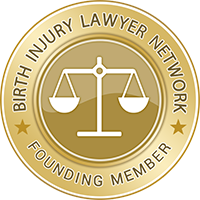Kernicterus and Hyperbilirubinemia
Kernicterus is a brain dysfunction that results from high levels of bilirubin in the baby's blood while hyperbilirubinemia is the excessive amount of bilirubin in the blood. Bilirubin is the yellow substance formed when the body breaks down old red blood cells. It is processed and removed by the liver from the blood but when this fails, the presence of bilirubin in the blood increases and will cause the yellow discoloration of the baby’s skin and whites of the eyes.
Kernicterus rarely happens but it occurs when the excess bilirubin moves out of the blood and collects in the brain tissue leading to serious neurological complications such as brain damage and loss of hearing. An infant will develop kernicterus during the first three weeks especially that once a baby is born, there is a normal increase of breakdown of its red blood cells. At risk of having kernicterus are those babies who have contracted an Rh hemolytic disease as it can lead to hydrops fetalis which may lead to severe jaundice and to kernicterus. Other factors include prematurity and bruising such as cephalohematomas and caputs which can increase bilirubin production and lead to excessive jaundice. However, the condition is also known to happen to healthy babies. Kernicterus can cause athetoid cerebral palsy, hearing loss, problems with vision and teeth and in some cases intellectual disabilities.
The kernicterus have three stages—early, mid and late, with each stage manifesting its own symptoms. Early stage symptoms are extreme jaundice, absent startle reflex, poor feeding or sucking and extreme sleepiness or the baby is lethargic. When the baby has a high-pitched cry, arched back with neck hyperextended backwards, bulging fontanel and seizures, he or she is already in the mid stage of kernicterus. A baby is already in the late stage of kernicterus when he or she has a high-frequency hearing loss, mental retardation, muscle rigidity, speech difficulties, seizures and movement disorder.
A kernicterus diagnosis is confirmed via a blood test which will show a high bilirubin level greater than 20-25 mg/dL. Prevention is the best treatment for kernicterus. Early detection of the yellowing of the skin and recognizing that this is a problem can lead to immediate treatment of jaundice and thus preventing the development of kernicterus. Treating the disease will depend on several factors such as the age of the baby, the severity and if the baby has some risk factors. Common treatments used include light therapy or otherwise known as phototherapy and exchange transfusions. The blue color of the light changes the bilirubin from a toxic form to a water soluble, non-toxic form that can be easily eliminated. Exchange transfusion, on the other hand, rapidly removes toxic bilirubin from the baby's blood.
Some children who have had kernicterus sometimes do well but others are not so fortunate because they can suffer from severe deficits such as cerebral palsy, mental retardation and vision and hearing problems that require a lifetime of care. Or, severe damage to the brain can result in the child's death.
Children who develop Kernicterus likely are victims of medical malpractice so parents should be vigilant. Delaying treatment may just cause the baby his or her life.
Find an Experienced Birth Injury Attorney in your Local Community
 Find A Lawyer in Columbus, OH
Find A Lawyer in Ohio
Find A Lawyer in Any State
Find A Lawyer in Columbus, OH
Find A Lawyer in Ohio
Find A Lawyer in Any State
